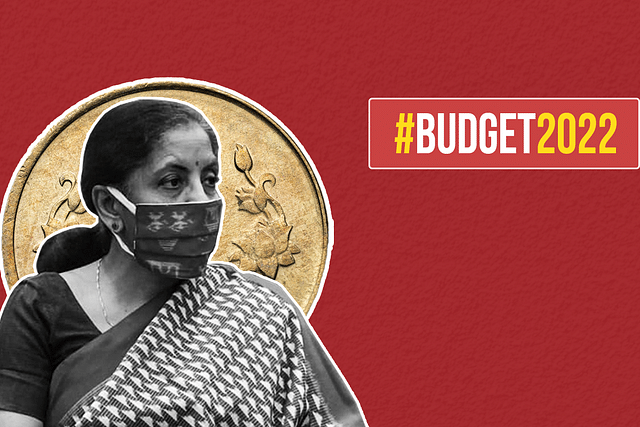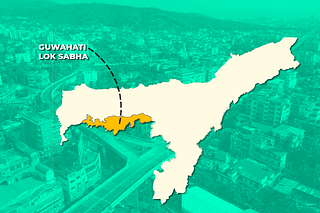Economics
Budget 2022: Ushering In 'Agile Macro'
Aniruddha Kekatpure
Feb 02, 2022, 04:04 PM | Updated 06:51 PM IST
Save & read from anywhere!
Bookmark stories for easy access on any device or the Swarajya app.

The default mode of policy-making in India and most of the world has traditionally been to rely on a pre-determined “Waterfall” approach — an upfront analysis of the issue, detailed planning and finally meticulous implementation. This is the framework that underpins five-year plans and rigid urban master-plans.
The problem is that the real world is a complex and unpredictable place buffeted by all kinds of random shocks and unintended consequences. The response of traditional economics was to create ever more detailed plans/regulations, and elaborate forecasting models despite more than adequate evidence that this did not improve outcomes. In his Nobel Prize acceptance speech, economist Friedrich Hayek dubbed this “The Pretense of Knowledge”.
This Economic Survey sets out to explain the alternative “Agile” approach that informed India’s economic response to the Covid-19 shock. This framework is based on feed-back loops, real-time monitoring of actual outcomes, flexible responses, safety-net buffers and so on. Planning matters in this framework but mostly for scenario analysis, identifying vulnerable sections, and understanding policy options rather than as a deterministic prediction of the flow of events.
- Sanjeev Sanyal, Principal Economic Advisor, Ministry of Finance (Economic Survey 2021-22)
India is in the midst of a paradigm shift in its Public Policy. While the above paragraphs from the Economic Survey 2022 described the context of this shift, the Budget itself set the direction of the new macro vision emerging from it— the Agile Approach.
While much effort in data and statistics compilation will be required for the continuous fine-tuning and upgrading of the Agile Approach, an unambiguous beginning has been made.
The quantitative analysis of the Budget resonates better once the qualitative paradigm is taken into consideration.
The theme of transparent accounting of the off-balance sheet liabilities gave credibility to the Budget 2021 estimates. This theme continues in FY23 and gets more pronounced despite the economy gathering momentum. Financial markets reward consistency and predictability in outcomes with lower risk-premia and higher valuations.
Given just a couple of observations, it is premature to conclude that Indian public policy has sustainably turned a corner in delivering predictable outcomes with positive surprises, but an audacious effort has is underway.
In terms of the macro vision that will guide Indian public policy with ‘Agility’, three initiatives stand out — An Integrated PM Gati Shakti Masterplan, Overhauling of the SEZ Act (details to be announced) and Reimagining Urban Planning from the first principles to accommodate 50 per cent of the population by 2050 (details to be announced).
Simultaneously, the ongoing legislative and process reforms with favourable financing conditions, are improving the momentum of the structural growth drivers.
A case in point of how the structural and methodical approach is turning around the legacy issues is to note that after a decade, PSU banks have finally weaned off government support for raising capital.
Budgetary allocation for PSU bank recapitalisation is finally nil in Budget 2022 despite back-to-back Covid disruption over the past two years. As growth opportunities surface, PSU banks are now capable of tapping the markets at non-dilutive valuations to fund their growth.
While Budget 2022 makes a strong philosophical turn in the public policy aspect, quantitatively, it is largely a non-event in-toto for most citizens. And that, is how Budgets should be — provide direction, not sugar highs!
Four Key Themes Underlie Budget 2022
1. Growth Impetus by maintaining the Quality of Spend: Avoiding populist spending announcements despite major state elections and instead choosing to support growth by increasing capex spend by 36 per cent to Rs 7.5 trillion (2.9 per cent of GDP). Coupled with capex by PSUs, overall capex spend would increase to Rs 11 trillion (4.2 per cent of GDP).
States too have ramped up their capex spend. Top 18 states increased their capex spend by 66 per cent year-on-year to Rs 2 trillion in April-November 21 period. (Annualised spend Rs 3 trillion). Additionally, the Union government has earmarked Rs 1 trillion as interest-free loans for the states in FY23 (up from Rs 150 billion in FY22) to encourage spend on productive capex.
2. Planning based on Credible Estimates: Expenditure growth of 7 per cent is planned on the back of a mere 5 per cent Revenue Growth despite 11 per cent growth in Nominal GDP. While taxes are expected to grow by 10 per cent, non-tax revenue and non-capital debt receipt are expected to de-grow by 14 per cent and 21 per cent.
Clearly, there are upsides in both the line items with BPCL divestment and LIC IPO along with other asset monetisation avenues. Stable financial markets can facilitate asset monetisation plans at relatively good valuations.
3. Thrust on Labour-Intensive Industries: Focus on structurally enhancing the productive supply side capacity of the economy by utilising the supply of labour has been a key policy impetus of the government. PM Gati Shakti Masterplan (Roads, Railways, Airports, Ports, Mass-Transport, Logistics, Waterways) plus driving investments in manufacturing through Production Linked Incentive Programs in 14 sectors and overhauling of SEZ Act to drive exports are the key planks to drive the multiplier effect in the economy.
4. Stability of Tax Regime: No news is good news! The government has taken a pragmatic view that as the economy opens up further, tax buoyancy should aid finances in FY23 and tax rates don’t need to increase. This is amply demonstrated by the FY22 tax buoyancy. FY22 Tax Revenues of just nine months are already at 97 per cent while Fiscal Deficit/Revenue Deficit/Primary Deficit stand at 50 per cent/35 per cent/28 per cent of FY22 Budgeted Estimates.
While the thematic initiatives are medium term structural positives, the near term impetus comes from focus and higher allocation to PM Aawas Yojana (Rs 480 billion), Nal se Jal (Rs 600 billion) and extension of Emergency Credit Line Guarantee Scheme (ECLGS) to contact intensive segments of the services sector up to March 2023.
Despite the extensive scenario analysis driving the near and medium term policy initiatives, there are two major irritants which are likely to be a drag on the economy and spring negative surprises:
1. Lower Rural Spend: A 3 per cent Lower Rural Spend in FY23 at Rs 3.3 trillion after a 7 per cent de-growth in FY22. While FY23 allocation is still 12 per cent higher on a 3-year CAGR basis, the incremental drag of falling rural demand is likely to weigh on consumer and business sentiment. Higher state government spend plus normal monsoon can partially offset the negative fiscal impulse of the Union government.
2. Negative Surprise on Subsidy Assumptions: Food/Fertilizer/Oil subsidies are assumed to degrow 27 per cent collectively to Rs 3.2 trillion even as global agri and energy commodities are consistently inching higher. A negative surprise can put upward pressure on the estimated net borrowings of Rs 11 trillion, thereby putting further pressure on interest rates to rise.
The risks though should be contained by the prudent, realistic and credible growth estimates. With Omicron wave proving to be relatively mild, the probability of future waves being less disruptive is quite high.
FY23 is likely to have far lesser mobility restrictions and the economy is likely to operate at almost full capacity.
The return and revival of contact-intensive service industries should power employment and the economy.
As seen in the past couple of months, a normally functioning economy can positively surprise the conservative revenue estimates, thereby giving the union and state governments better comfort to ramp up expenditure. The ‘Agile Macro’ is likely to set the stage for an ‘Agile Micro’, going into FY24/25.
Also Read: Economic Survey 2021-22 Offers A New Approach To Policymaking
Save & read from anywhere!
Bookmark stories for easy access on any device or the Swarajya app.
Support Swarajya's 50 Ground Reports Project & Sponsor A Story
Every general election Swarajya does a 50 ground reports project.
Aimed only at serious readers and those who appreciate the nuances of political undercurrents, the project provides a sense of India's electoral landscape. As you know, these reports are produced after considerable investment of travel, time and effort on the ground.
This time too we've kicked off the project in style and have covered over 30 constituencies already. If you're someone who appreciates such work and have enjoyed our coverage please consider sponsoring a ground report for just Rs 2999 to Rs 19,999 - it goes a long way in helping us produce more quality reportage.
You can also back this project by becoming a subscriber for as little as Rs 999 - so do click on this links and choose a plan that suits you and back us.
Click below to contribute.





